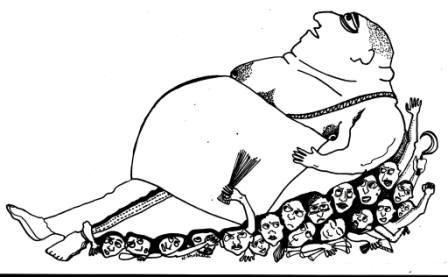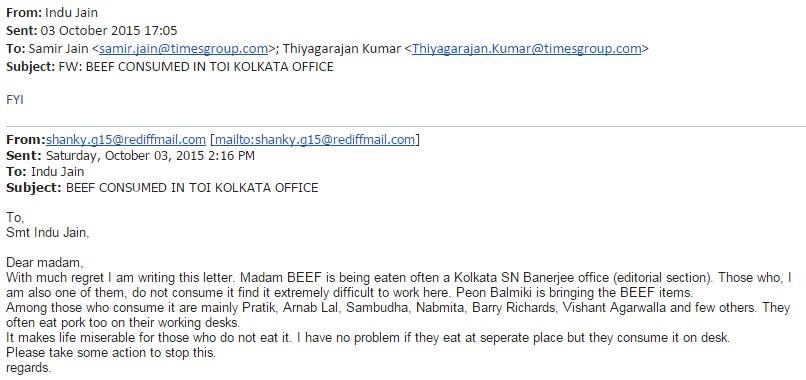Raina Singh, Theresa Joseph & Shafiullah Anis
 Ambedkar Reading Group met online on 10th May 2020 with the motive to read, understand, discuss and debate from an anti-caste perspective, two ideas a) Corona pandemic from Bahujan Perspective and b) Future Scenarios post-Corona pandemic. The discussion was led by Vinith Kumar (Chair) and Shafiullah Anis (Co-chair).
Ambedkar Reading Group met online on 10th May 2020 with the motive to read, understand, discuss and debate from an anti-caste perspective, two ideas a) Corona pandemic from Bahujan Perspective and b) Future Scenarios post-Corona pandemic. The discussion was led by Vinith Kumar (Chair) and Shafiullah Anis (Co-chair).
Introduction
The emergence of Covid-19 pandemic has not only brought forth human precarity to natural disasters but has also unearthed the gruesome darkness of the social. When the cities and towns across the world were getting locked-down, the marginalized section of the society faced another blow to their vulnerable life. Various scholars, activists, professionals and thinkers have expressed their concerns and the leading role has been played by roundtableindia.co.in and dalitweb.org in bringing in wide varieties of views and discussions focusing on Bahujan-Pasmanda concerns due to the pandemic. These accounts are of various natures: documentation of atrocious instances of human displacement and suffering of Bahujan-Pasmanda section of the society to inputs and advisories by medical professionals; thinkers conceptualizing the pandemic from Bahujan-Pasmanda lens and unveiling the unseen and undiscussed; and professionals finding unique and equitable solutions to this formidable challenge and so on.
Graded Citizenship
The pandemic has exposed how the graded inequality of Indian subcontinent manifests itself in the form of graded citizenship. As Kuffir rightly points out, a migrant laborer in India does not have as many rights as illegal migrants have in foreign countries such as UAE etc. After the imposition of CAA, NRC and EWS, corona has given them another opportunity to impose the existing caste structure. Brahminical dictatorship of the 15% upper castes, across religions prevails, while Bahujan/Pasmanda enters into an era of deepening of graded citizenship. Vinith says, ‘the Brahmin state shows its true stripes by protecting the interests of only a handful of its citizens.’ In one area, we see that Savarna sits at home conveniently, and works from home but 90% of the population is in the unorganized sector. The state does not think about the Bahujan population which is dependent on mobility. In the name of distribution of food, the state is giving some ration to those who have lost their means of livelihood. Who is to say that a family will survive on 5kg rice, 2kg dal, 1kg oil, and so forth? No basic income is being given; instead a sham of charity business has been adopted by the state, where Bahujans are made to queue up to get ration, at the mercy of the state and NGOs.
Planned Unplanning
The lack of intervention on the part of the Brahminical state by turning a blind eye to the death and exodus was intentional. Shubhi points out, ‘As opposed to the popular belief that sudden lockdown in India was unplanned and badly executed, one must see it as planned.’ This planned unplanning was to strengthen the caste structure by building up on the vulnerabilities of the Bahujans. Shafiullah Anis added, ‘The state is not even trying to play the role of savior and oppressor at the same time, as it is oppressive in nature, fully. State appears to be planned, they have plans for 15% of the people whom they are picking, putting them in quarantine in hotels, sending them home, and so forth. It is not a matter of inefficiency. They don’t care about the migrant laborer. If you die, does it really matter? Farmers are dying every year. It comes from their ideological perspective and Brahminical understanding of a country.’
Maintaining Brahmin’s Purity
If one looks at the larger agenda of the government, there has been a conscious shifting of gaze from the Brahmin to the Bahujan. Kuffir Nalgundwar in one of his Facebook posts raises a pertinent question: why didn’t the state screen the Brahmins and Savarnas, who travelled abroad and why they were not quarantined? The answer is obvious: had we screened in the beginning; it would have been clear that the Savarna was the carrier of the virus. According to Vinith, the Brahmins have an image of being pure; the state cannot mess with the image of the vegetarian Brahmin. When the crisis broke out, the state imposed a lockdown on the entire population. Now that the scale has imploded, it became a pan India situation, and then only did the state intervene. The state is not bothered about saving the Bahujan populations, which is why when NRIs come in they are welcomed, while when the migrants are stuck, they are the carriers of the virus. This highlights the distinction between how the state treats Brahmin versus how the state treats the Bahujan. Blame has shifted from the initial vector to the lower caste migrants. The Brahmanical society has found a way to undo all the progress we had made in the past 70 years. In fact, now they are trying to justify untouchability as an ancient system against the virus, to prove a point. As Vinith points out, even the banging of utensils and lighting lamps was not idiocy, rather a planned shifting of gaze. In having the Bahujan clap, the Savarna doctors become saviors.
Situation Abroad
Looking at the situation in New York, business is going about as usual, as Heera Singh pointed out. Arrests have been happening, and most arrests are of blacks and some of browns. Latinos and blacks are most of the infected people, which is something beyond structural racism. Unemployment level has gone up, ad almost all of those who are losing jobs are blacks or other racial minorities. What is going to happen is that in the past 20 years they have shown New York as a new city, it will be all empty. Blacks and Latinos will be forced out to make utopian cities that they have envisioned. Housing prices will be made higher to push out Blacks and Latinos. There are protests against the rent. Panthers and left groups are giving out food, but this cannot be the long-term goal. In Queens, there is undocumented labor. The lines for free food are crazy, which are somewhat like election lines in India. In the US, people live paycheck to paycheck, and have no savings. Unemployment insurance is there in place. If you are fired, the government will pay you, unlike India.
The Role of Language
Giving a fresh direction to the discussion, Nidhin pointed towards the linguistic politics of government communication during the pandemic: “I think we need to focus on different states and see how the various state governments are coping with the pandemic. It is hard to get a clear picture of what is going on if we think of the entirety of India, instead if we look at it from a state perspective we will have a better grip of the situation.
I think there is something to be said about linguistic preparedness. It is important to note if some basic infrastructure like language, transportation system, etc. were in place before the pandemic as they have helped these states deal with the situation in a much better way. There have been reports of migrant labour receiving forms in English that they simply cannot understand. In Kerala, a strong linguistic foundation exists, so when a message is sent out, all the people understand it.
In this discussion of communicating the message to affected populace, Vinith adds by saying “Communication is definitely an important factor, but it is also a telling sign that the (Kerala) CM is willing to come out to the public and actually talk numbers. I wouldn’t say Kerala is a perfect system but it cannot be ignored, how well they have dealt with the pandemic. This notion of decentralizing needs to be looked at. When the food distribution was taking place in Dehradun, we heard from them that the Bihar migrants had gotten rations but the Bengali migrants had not, even though they were practically staying in the same Basti. This was a bewildering notion. In Kerala, they do have very good infrastructure in place, but I think this is possible only when the government thinks of all its people as citizens.”
“For example, you never hear of a Tamil Laborer or a Malayali Laborer. This implies that the state has provided them with opportunities to work within one’s own state. They don’t have to leave their village and migrate to a different state that does not speak the same language as them.
In Uttarakhand, the transportation is terrible, people have to wait for hours to catch a bus and it takes longer to travel. In Tamil Nadu, it was a conscious effort from the government’s side that there were frequent public transport options, such that it is possible to get from one end to the other in a matter of 10 hours. This is intended at freeing bonded labor and nobody needs to feel like a foreigner in a strange place.”
As regards to the point raised by Vinith about the differential rates of successes and failures of different states, Shafiullah Anis responded by saying “We need to look at the myth that the number of cases in UP is low meaning the state is doing well. Remote areas away from metros and connectivity have less probability to become a hotspot than when you are connected globally. Kerala was such a state, despite the connections with the gulf etc. Literacy is good. Basic health is good. UP was not under the same risk as these globally connected regions. For instance, my university is a quarantine center, and the district administration is, as of now, able to manage, but the credit to this success goes to the fact that UP is not that well connected globally. On the other hand, Maharashtra is. That is why Mumbai and Pune are badly affected- the more cosmopolitan a space, the more the probability of becoming a hotspot. I can’t say what happened in Bengal, are they not testing? Whatever it is, their state gives a sense that the situation is pretty terrible.
One of my friends was there. He was infected and quarantined. He had no travel history at all. This can only mean that the community transmission is high. What is going on there? Are they hiding numbers? No clue what’s happening in Bihar either. In UP you will have a few good medical colleges and Hospitals. In Bihar, we don’t have that infrastructure. People in Bihar, who are sick, they usually go to Delhi, UP etc. I don’t think that language is a problem here. UP is the beneficiary of having Hindi as the national language.
Nidhin responded to Shafiullah’s point saying “I’ll contest that people wanted their information in Bhojpuri, Maithili, etc so that they could understand. That people are not able to understand first hand that they cannot understand first-hand information is problematic. Distinguishing factor: from south, northeast, Maharashtra and Punjab, and the North. Who is your target, who are your messages directed at? You will see that they don’t have a government that speaks their language. Sikkim has done well, for instance. To this Shafiullah added “DGP of Bihar was seen speaking in Bhojpuri in a viral video. I have never seen this happen before.”
Nikhil added by saying “Language plays a role, especially in Bengal, where we do have a standardized language. There is a linguistic diversity but Bengali is…” And then Abhishek added “We understand that the cow belt has a problem with the imposition of Hindi, but the kind of mobilization the govt. is getting in Bihar is a reflection of the movements that have existed. If you look at Uttarakhand, where Kumaoni and Garhwali people who are blissfully unaware of the damage Hindi does. Language consciousness will take decades to build. To imagine other parts of India will have a similar reaction to the pandemic based on common language is optimistic.”
This discussion on language and its role in pandemic management and Bahujan politics in general found a variety of views and discussion from most of the participants. Nidhin continues after Abhishek, saying “They could not or were capable of responding. Language plays a role but not the only factor. Like Nikhil was trying to say, despite having a language, they still are falling back. It is important however when we discuss a state response. If there is inequality, if you want to build something, you need to use something that is common. Usually, that is the common experience of the language. As G Aloysius says ‘You don’t always have to identify as Bahujan but also as Malayali, Tamil, Awadhi, Bhojpuri.’ Languages are built by people, responses are graded. As far as the Bahujan concerns are concerned, language should be seen as part of the agenda.”
“Uttarakhand has the largest no of community radio stations, in Kumaoni and Garhwali and they have had a huge role in communicating about the crises, migrants, demand, and anxieties are communicated back to the govt. Discussion of language often becomes a Savarna space where the only discourse is that of culture. This vacuum needs to be filled by Bahujan intellectuals.
At this point Faqir Jay entered the discussion saying, “We need to find out the commonality. Language is one. That’s why when I was working at a Bhojpuri activity; I realized that the problem with all languages (including English) is that they are owned by the Savarna. Even the Bhojpuri v/s Hindi struggle is led by the Savarna. That’s why we started a committee. It is led by the Bahujan. In Tamil Nadu, the fight was against Brahmanism and to establish Tamil identity. Similarly, Bhojpuri is the product of Bahujan labor. Hindi was the outcome of Bahujan labor too. Later it was appropriated by the ruling class.
The Hindi that they write and speak is two different things. The written Hindi is basically Sanskrit language hegemony. For combating pandemic, we need communication. Even if the written Hindi is translated to Bhojpuri they still can’t read because they are illiterate. The literacy rate that is published is not true, I know because of my work in these departments. They speak Bhojpuri but the written Bhojpuri is basically Hindi.
Just like cooking is a woman’s job, but when it is lucrative, then the chefs are male, similarly when it is lucrative Bhojpuri becomes a Savarna language. They are basically imposing Sanskrit. Structured language is the worst.
As far as the pandemic and the labour law is concerned. It should be more stringent. The present labor law is in favor of the capitalist. It needs major reconsideration.”
Abhishek added by saying “Only he who is unilingual has real will or incentive to fight for the survival of his language. A person who is bilingual loses the desperation to fight for either language; such is the socio-economic mobility that comes with English and Hindi.
The Silence of Legal Fraternity
Ayaz Ahmad responded to a question raised, “Why is there not much noise from the legal fraternity? Why national issues and national identity? Legal education has been organized in favor of the Brahmins and Syeds. There is Brahmin monopoly in the legal education. Hence, the laws they made were in favor of the neoliberals and the capitalist class. They compromise labor rights in avery blatant manner. We need to look at labor laws from the global neoliberal elite. Labor laws were already capitalist laws, as they were not in favor of the laborers. It did not happen overnight. The pandemic is an excuse to take away the laws. It’s not to do with identity alone. The Brahmin Savarnas use the pandemic to further deepen their hegemony. Whatever handful of rights the Bahujan had, the Brahmin is taking that away”.
Post-Lockdown Scenarios
“In India, perhaps decision of lockdown was taken timely, unlike some Western countries but it was abrupt” Shafiullah Anis remarks. “Time for preparation and facilitation was missing. The state did not give measures for migrant workers who lost their livelihood. If the livelihood is gone then life is gone as well. Looking at how medical science will deal with the virus; Anis lays down six post-lockdown scenarios as listed by Glyn Morgan from Syracuse University. Quoting Morgan he says “if we develop a vaccine, and depending upon its success, either we will go back to normal life, or the virus becomes a yearly phenomenon; if we manage to get some sort of immunity. Our society will go into annual winter quarantine. What if no vaccine gets developed? Even the health minister has recently said that we must learn to live with the virus. In that case, there could be four scenarios as per Morgan: a) Hygiene society: Where people wash hands, wear masks, practice social distancing b) Techno surveillance state: Everyone will be monitored. Using the pandemic act, the government has already introduced Aarogya app to monitor people, a line that no other democracy has crossed; c) Hippocratic society: Where life takes priority over the economy and everything else; and d) Darwinian society: Survival of the fittest, where old and weak are made expendable, and young and strong are preserved keep the economy running so that the government can keep functioning.
Withdrawal of labor rights, justification of untouchability, and similar other moves on the part of the state show that we are not going back to normal life again. Earlier we had an image of Indian police with a danda, and lack of power. This image doesn’t stand now. Anis further adds, ‘We are as bad a police-state as any other White country, where the police recklessly attacks the Black population.’ There is social justification of all actions. How will we live post-lockdown? It doesn’t look very positive.
Shafiullah continued by saying that it appears that in our conditions, Morgan’s scenario do not fit properly but they indicate what may be the outcome after the Pandemic. I can clearly visualize that the country is going to become a dictatorship of the 15% Savarna/Ashrafs.
The Role of Bahujan Civil Society
Perpetual lockdown, given the government we have has led to destruction of livelihoods and markets. We will look at what role the Bahujan Civil Society and Ambedkarite movement can play in this situation. In a conversation with Anu Ramdas, a few members of the group realized that by providing rations to the daily wage laborers, we have played a part in their destitution. We played a role in their not being able to go home. As Kuffir Nalgundwar said, “we must view the work that was done by Babasaheb and Periyar as revolutionary and not concessional. People who have not experienced a welfare state, rather only the neoliberal state, so even our fight has been about reservations and EWS. Us taking up the role of the state in providing supplies was a blow. If we resort to this, who will send them back home? Are we in agreement with the govt. that a short-noticed lockdown is most important? A lot of our demands have become concessional in nature. The nature of our demands must change and become more on the lines of Ambedkar or Periyar. To go ahead, we cannot imagine continuing unless we have access to health care. It’s time to push for basic income. The first intervention that should have come from Bahujan movements across should have been about demanding arrangement of transportation. The fear that the Bahujan carried about the virus played a role here.
Rights are being withdrawn on a day by day basis and we are blissfully unaware of it. First, they got in EWS, then CAA, NRC, and now they have removed labor rights. Surveillance and the police state should be fought against. Modi has gained popularity, made political moves, and pushed an agenda during the lockdown. Vinith states, “the pandemic has done nothing to stop the state from proceeding with its agenda. We should not be sitting idle either, it’s time for us to push our agenda and come up with strategy for dealing with the lockdown.”
However, it’s not a problem that can be solved immediately. For the long-term, we may follow the example of Gaurav Somwanshi’s work with farmer’s cooperatives, as Shafiullah Anis suggests. As a long-term goal, we need to connect farmers to direct supply to remove the middleman. Gaurav and his team, EmerTech Innovations, work with the grape farmers in Nashik. There was no way they could transport grapes during lockdown. So, they decided to convert it to raisins. They will do this as a cooperative. The value chain is being redesigned. This was an example of creative intervention. When there is a Patanjali, why not a Jai Bhim brand? Besides political assertion, we need to make our presence in the economy, law, and so forth, so that we can gain independence. We need innovative ideas. We need to enter those spaces and at the same time make our own spaces.
Conclusion
Vinith concluded by saying, “With regards to the question of whether managing the pandemic comes down to good governance, I am slightly in disagreement. I think the basic question is whether the government practices anti-caste politics or not. What sort of government can deal with a pandemic? Only a govt that can see all its people as citizens.” The radio stations are still Savarna owned. This is what Periyar stressed on, that the nature of Tamil being elitist has to change. Bahujan must reclaim language as their common resource. Language is subsumed in the caste question. Fight for statehood of Uttarakhand was based on linguistic notion before it was hijacked by the Savarna. Dehradun being capital is evidence enough for this. Vinith further adds, ‘I don’t agree with getting rid of the middleman, I think doing away with the agriculture industry as a primary source of income for Bahujan is more important.’ Brahmin has control of agricultural land and its income. Babasaheb and Periyar urged Bahujan to move out of villages to the cities for this very reason. Tamil Nadu was able to accomplish land reforms, freeing people of bonded labour, establish multiple small towns and cities all over the state all by moving away from the agriculture industry as being its primary source of income.
The pandemic was inevitable; this is the nature of capital. Karl Marx points out that “At a certain stage in the evolution of the productive forces, we see the emergence of productive forces and means of trade which, under existing conditions, only cause disasters. They are no longer productive forces, but forces of destruction (machinery and money).”
Agribusiness, being one of the most profitable industries, has global players that include the USA, Germany, Italy, China, and so on. And it should come as no surprise that some of these countries (if not all) factor in the list of the most affected (infected) countries.
One is pressed to think about how all this affects the Bahujan. With one of the most extensive lockdowns, India has closed its state borders to laborers who want to go back home. People are stranded and unemployed. While India has sent repatriation flights for people working outside the country, the plight of those stranded inside seems to be less of a concern. One has to see this as a burden the Bahujan has to carry for the Brahmin’s indulgence in global capital.
~~~
This discussion was transcribed, compiled and edited by Raina Singh, Theresa Joseph & Shafiullah Anis
Raina Singh is Assistant Prof at Graphic Era Univ, Therasa Joseph teaches Mathematics at Woodstock School, Mussoorie, Shafiuallah Anis is Assistant Professor of Business and Commerce at Glocal University Saharanpur.










